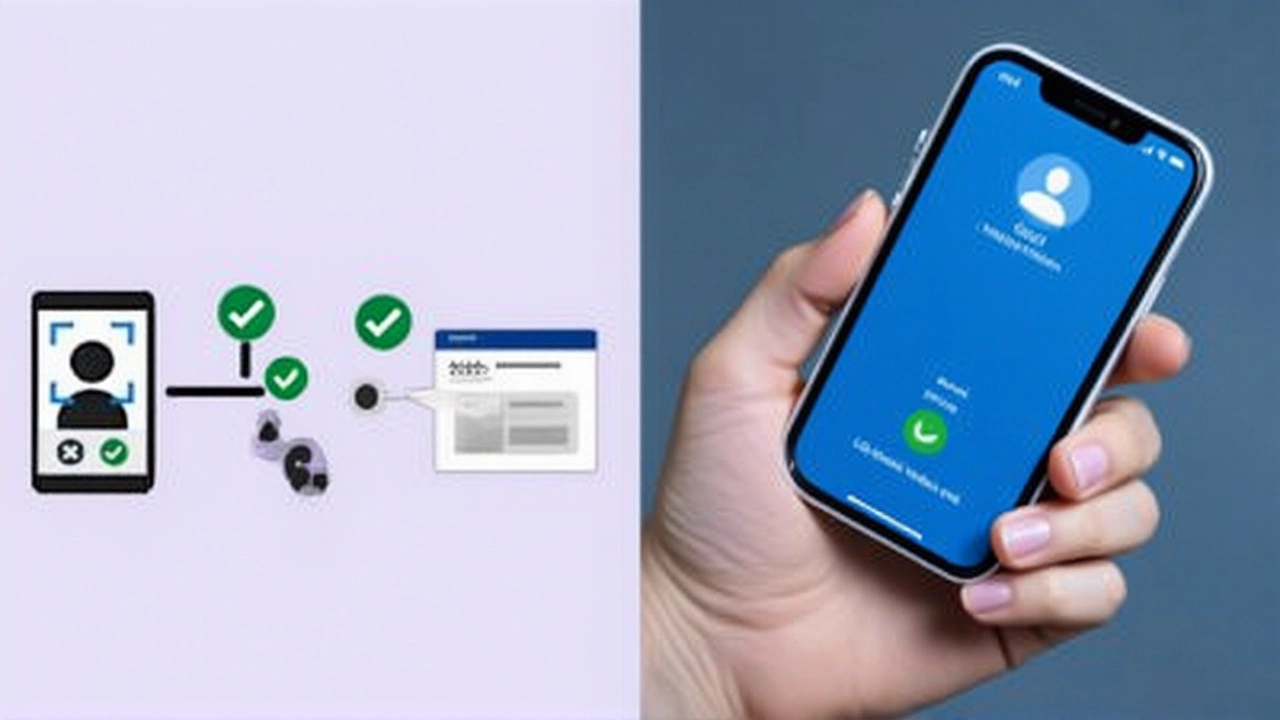When Ian Murray, Minister for Digital Government and MP for Edinburgh South, announced on that the British government was rolling out a digital veteran card, he called it “probably a demonstration to the public… the first use case for a digital credential on your smartphone.” The launch took place at London during a ceremony hosted by the Department for Digital, Culture, Media & Sport (DCMS), signalling the Labour administration’s ambition to build a nationwide digital‑identity ecosystem.
Background to the Digital Veteran Card
The concept of a government‑run digital ID dates back to the Conservative government’s 2021 “digital identity trust framework,” which was shelved in June 2023 after the House of Lords Communications and Digital Committee flagged privacy risks. In January 2025, under Keir Starmer’s leadership, the Labour Party revived the idea, promising stronger civil‑liberties safeguards. Veterans were chosen for the pilot because they already hold a verified physical ID issued by the Ministry of Defence (MoD), providing a ready‑made trust base.
Since its introduction in November 2004, the physical veteran card has been issued to more than 927,415 former service members (MoD data, 30 Sept 2025). The digital version is now offered to roughly 1.8 million veterans living in England, Scotland, Wales and Northern Ireland, according to The Telegraph.
How the Card Works and Who Can Get It
To obtain the digital credential, a veteran must first hold a physical card. The application process runs through the official gov.uk portal, where the applicant creates a One Login account – the same platform that will eventually house digital driving licences and other public‑service credentials.
- Step 1: Verify your existing physical veteran card on gov.uk.
- Step 2: Register a One Login profile using a valid email address.
- Step 3: Upload a passport‑style photograph if the system flags the current image as unclear.
- Step 4: Accept granular consent settings that let you choose which data fields are shared with each service.
The credential lives in the One Login app, not on the phone’s storage, and biometric verification is performed on secure government servers overseen by the National Cyber Security Centre (NCSC). The app completed a three‑year beta with 250,000 civil servants before the public rollout.
Government Rationale and Civil‑Liberties Concerns
Liz Kendall, the Technology Secretary, said in a statement, “Our veterans have given everything by serving for their country and it is only right that we give them all the support they need… The digital veterans’ card will help remove barriers, reduce red‑tape and make it easier for people to access the public services they need.” She framed the programme as a low‑risk test that could allay the privacy worries that stalled earlier attempts.
Critics, however, warn that even a pilot can set precedents. The Independent noted that the system’s reliance on a single‑sign‑on (SSO) architecture could create a “digital bottleneck” if future services funnel through the same login. Civil‑rights groups have asked for transparent reporting on data‑retention periods and third‑party access.
Early Reception and Metrics
Within the first week, roughly 42,000 veterans had downloaded the card – about 2.3 % of the eligible pool. The government has set a target of 45 % adoption by the end of the six‑month pilot, which runs until . Key performance indicators include:
- Public‑trust scores measured fortnightly by the Office for National Statistics (ONS).
- Fraud incidence aimed at less than 0.05 % of transactions.
- User‑experience ratings gathered via in‑app surveys.
So far, fraud reports are negligible, and a preliminary ONS poll shows 68 % of participants feel “moderately confident” that their data is safe. Retailers like Lidl, Cineworld and the National Trust have already integrated the card into loyalty‑program checks, offering veterans modest discounts.
Future of Digital Identity in the UK
Should the pilot meet its benchmarks, DCMS will move forward with a digital driving licence rollout slated for July 2026, followed by a broader “digital ID for all” strategy that could eventually replace the need for physical passports in everyday transactions. The Labour government has earmarked £127 million (as of March 2025) for the underpinning infrastructure, with an eye toward complying fully with the Data Protection Act 2018 and the EU’s GDPR.
Ian Murray summed it up at the launch: “If we can prove this works for veterans, we’ll have a solid, trusted foundation to extend digital credentials to the wider public, without compromising civil liberties.” The next six months will be a litmus test for whether Britain’s digital‑identity ambitions can survive both technical scrutiny and the court of public opinion.
Frequently Asked Questions
How do I apply for the digital veteran card?
First, you need a physical veteran card issued by the Ministry of Defence. Then, log onto gov.uk, create a One Login account with a valid email, upload a clear passport‑style photo if asked, and follow the prompts to download the digital credential to the One Login app.
What advantages does the digital card offer over the physical one?
The digital version lets you prove veteran status instantly on your smartphone, cutting down on paperwork when you call the Veterans UK helpline, claim a war pension, or shop at participating retailers. It also feeds into the broader One Login ecosystem, which could soon host driving licences and other public‑service IDs.
Will my personal data be stored on my phone?
No. All biometric and verification data are kept on secure government servers reviewed by the NCSC. The One Login app only holds a reference token that grants you access when you choose to share specific details with a service.
What happens after the six‑month pilot ends?
DCMS will evaluate trust scores, fraud rates and adoption figures. If targets are met, the next phase will be a digital driving licence pilot starting July 2026, followed by a broader rollout of digital IDs for the general public.
Are there any costs for veterans to obtain the digital card?
The service is free of charge. The only cost you might incur is a standard data‑usage fee from your mobile provider when you download the credential.




